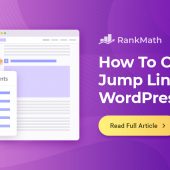PPC or Pay per click can be one of the most effective ways to increase your brand awareness, drive inbound traffic to your website, and generate leads for your business – if you know how to use it properly. However, many people find themselves struggling with their PPC performance and end up losing a lot of money in the process due to low click-through rates and high cost per click.
You already know that you need to be running pay-per-click ads to make money online, but you’re not quite sure how to improve your PPC performance and get the biggest bang for your buck. That’s where this article comes in! These 10 tips will help you immensely when it comes to PPC advertising and are especially effective when used together. Follow these ideas and see how much your ad spend improves!
1) Give your ads more headlines
Headlines are everything when it comes to a search ad’s click-through rate. After all, you only have about four seconds for an Internet user to look at your ad, decide whether or not it’s relevant and then actually click on it. To be sure that every one of those precious seconds is well spent, make sure that your ad includes a compelling headline—you don’t have time for mediocre SEO headlines in search ads! In fact, adding more than one headline can significantly improve overall click-through rates by giving searchers more options when deciding which link they want to follow. For example, if you see a lot of people clicking on your second headline instead of your first one, try testing out third and fourth headlines as well.
2) Optimize for long-tail keywords
Long-tail keywords typically have a higher click-through rate and cost less per click than short head terms. Make sure your ads are set up for long tail keywords so you can get more clicks and save money. Also, ensure that you’re using appropriate ad groups with different ads and landing pages that speak to specific personas. For example, if you sell gifts for cat lovers, a good segmentation would be toy cats versus catnip toys versus kitty clothing. Varying up your language not only makes it easier for searchers to find exactly what they want but also helps cut down on wasted clicks by making sure your ads are hitting people looking for what you have instead of what they think they do.
3) Don’t focus on volume, focus on quality
With a pay-per-click campaign, we often see advertisers focusing on volume. They want more and more clicks, thinking that’s what drives results. In some cases, they’re right—but as a general rule, when it comes to lead generation, quality beats quantity. After all, you can get 100 clicks from 100 different people in one day or 10 clicks from 10 people during an entire month. Which scenario will drive more conversions? It’s no surprise that most marketers would rather have only 10 well-qualified leads than 100 not so qualified leads.
4) Target customers instead of locations
It may seem obvious, but many business owners make a critical mistake when it comes to setting up their first campaigns: they focus on targeting locations. The issue with location-based targeting is that you aren’t reaching customers in those areas – you’re reaching potential customers. The best way to start improving your PPC performance is by establishing customer personas and starting local SEO efforts around them before using location-based keywords at all.
Good Read: Improve PPC Ads with the Sitelink Extension – A Complete Guide
5) Write ad text that excites customers
If your business caters to any sort of niche, you’ve probably heard of keywords. These are words customers type into search engines like Google, Bing and Yahoo in order to find companies similar to yours. When your company appears as a paid advertisement alongside search results for keywords that interest you (the advertiser), it’s called pay-per-click or PPC advertising. You need very little equipment or resources beyond your knowledge of what terms will most likely get clicks from interested customers. Make sure that your ad text is written in such a way that it captures customers’ attention and entices them enough that they click through.
6) Keep it simple, keep it consistent
It’s easy for advertisers to get caught up in fancy optimization tactics, but most pay-per-click (PPC) managers find success in fairly straightforward methods. The first and easiest way to improve performance is ensuring your landing page content is relevant, engaging and unique. Use strong keywords that are both descriptive of your product or service and attract people searching for it—don’t waste money on overly general terms. And make sure there are no spelling errors or technical glitches that could dissuade a potential customer from giving you their business.
7) Use negative keywords to remove unwanted clicks
You can make it easier for people looking for your business or products to find you, and you can make it harder for those who aren’t. With negative keywords, you tell Google which search terms aren’t relevant to your ads. This way, when someone searches with a keyword that doesn’t match what you’ve excluded (i.e., negative keyword), they won’t see your ad. For example, if you run a plumber business in New York City, Philadelphia Plumbers isn’t likely a search term that would lead you lots of customers—unless Philadelphia’s got some plumbers who want their New York friends taken care of while they’re on vacation.
8) Create compelling landing pages
No matter what your goals for your landing page, you’ll want to make sure that it looks compelling and is relevant to your keyword. Optimize landing pages for conversion: In order to optimize your landing page, you’ll want to A/B test different aspects of its design and copy in order to learn what works best. Track analytics regularly: By tracking performance of a variety of metrics (e.g., conversions and clicks), you can figure out what changes are needed in terms of ad copy, landing pages, etc.
9) Test the competition (and yourself!)
You can improve your performance by testing out your keywords against your competitors’ campaigns and modifying your own campaign on a regular basis. There are two ways you can do it: run simultaneous ad tests, or change one element at a time. With simultaneous ad tests, you create more than one version of an ad that both appear in search results and compare their performance as they compete for clicks from users. One of our favorite tools for running these types of tests is Google AdWords’ AB split testing tool, which allows you to simultaneously test up to five ads (one control with four variants) in each test group.
10) Keep an eye on performance metrics
Sure, it can be easy to get lost in optimizing your ad copy or landing page when you’re trying to improve your PPC performance. But there are a lot of different metrics that are equally important in determining what works and what doesn’t—beyond click-through rate (CTR) and conversion rate. If you want better results, for example, you may want to focus on improving view-through rate (VTR) or simply paying attention to bids by hour. Regardless of which metrics you choose, keep an eye on them all!
Conclusion
If you’re struggling with the performance of your pay-per-click campaigns, these 10 easy tips can help you see an immediate improvement. Implement these suggestions and you’ll be back on track in no time! If you still face any difficulty, you can contact PPC management company or Digital marketing company and they will help you with their experts.





